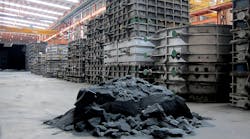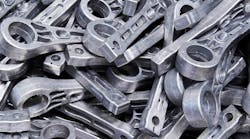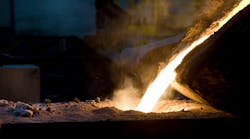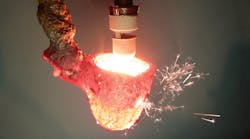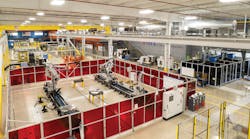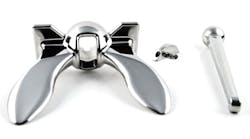Some designs don’t require much thought… or do they? The answer seems obvious in the case of ships’ anchors, which have one obvious purpose. The only design requirement is to concentrate the object’s mass so as to achieve its ‘grounding’ function, but keeping the object manageable in unsteady seas is important too.
Fimbinger GmbH, an Austrian specialty machine builder devoted three years to designing and developing the Seahawk SHHP Anchor®. In some parts of the shipbuilding industry, a three-year development program may not seem out of line. This anchor combines exceptional design with high functionality, and bests other models available not only with its high-quality processing but also with its lower weight (and therefore lower cost), as well as its higher holding power.
One important detail about the newly patented anchor is that it consists of just three parts — two castings, one forging, and no welds. The forged and turned anchor bar, secured by a crescent with two locking screws, is simply inserted into the cast anchor blade. With this novel, construction, the anchor can be dimensioned 25% smaller than in the conventional design. That innovation saves weight as well as material and production costs.
The material is a specialty alloy provided by Schmolz + Bickenbach. A decision was made to use a duplex stainless steel that contains, among other elements, chromium, nickel and molybdenum. Thus, the anchor achieves optimal corrosion resistance, an important factor for ships operating in salt, brackish, or fresh water.
The cast parts were produced by S+B using its Contura® process, which prevents corrosion-causing carbonization in the edge zone. It also achieves a very smooth surface finish. That’s also important to reduce surface oxidation, but the results are so effective that in the final surface treatment there are no faulty areas to be ground.
The anchor is supplied by Fimbinger with a high-gloss polished or bead-blasted finish. A further benefit of the duplex steel is its inherent high strength — 750 N/mm2 — which has a positive effect on the holding power of the anchor. Reportedly, it has three times the holding power of comparable models, allowing it to be classified as SHHP (Special High Holding Power), the highest possible designation of holding power.
The anchors are available in eight standard sizes between 55 and 200 kg. Larger, custom produced anchors are available up to 20,000 kg.

